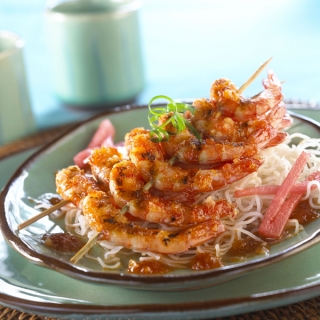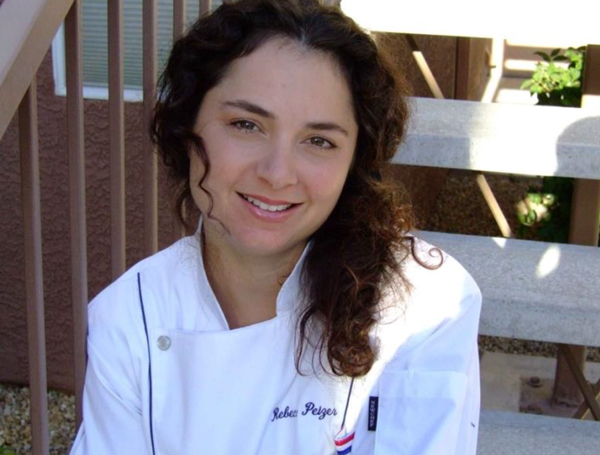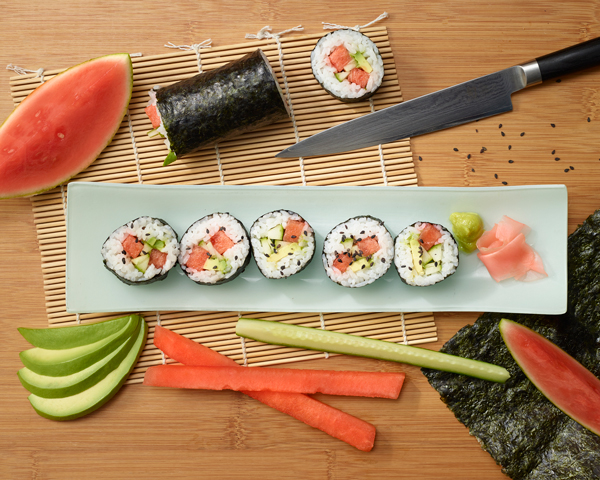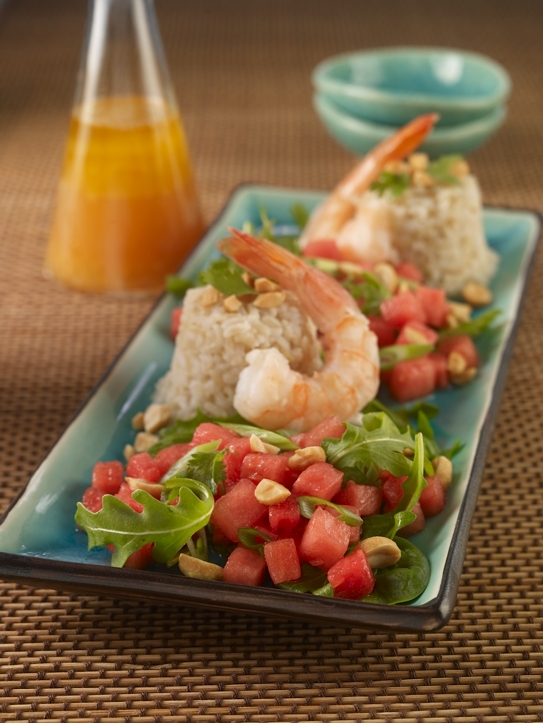
Building the “Why” Behind Global Cuisine Flavor Harmony
01 February 2023Chart-topping pairings illustrate how ingredients sing together in perfect harmony across the globe.
By Lisa Parrish, GMC Editor
Feedback & comments: This email address is being protected from spambots. You need JavaScript enabled to view it.
A choir director understands how voices blend, accentuate each other and create a sound that is better together. Learning about flavor and layering ingredients is much the same. Each ingredient has one quality, but when added to the next, the flavor builds and becomes more interesting. And just as a choir director is guided by sheet music, culinary educators now can use a flavor dynamics chart to help students learn how to layer flavors in global cuisines. And, the global flavor chart starts with a flavor most students know: watermelon.
 Rebecca Peizer, CEC, CHE, owner of All Things Culinary, created a chart that lists the quintessential spices, herbs, condiments, nuts, produce, dairy, proteins and beverages by world regions. She uses watermelon flesh and rind as a tasting base for these ingredients. The idea is that students appreciate why flavors and ingredients are specifically selected and used in each region.
Rebecca Peizer, CEC, CHE, owner of All Things Culinary, created a chart that lists the quintessential spices, herbs, condiments, nuts, produce, dairy, proteins and beverages by world regions. She uses watermelon flesh and rind as a tasting base for these ingredients. The idea is that students appreciate why flavors and ingredients are specifically selected and used in each region.
Click here to view and download the chart.
“I am always interested in why flavors go together,” said the former Culinary Institute of America professor. “Young chefs get lost trying to lump spices and ingredients together.” She wanted to lend her expertise in the world of global ingredients to help cooks understand the “why” behind flavor blending in various cuisines.
She landed on using watermelon as the tasting base after looking at other fruits and vegetables and decided watermelon’s flavor and texture created synergies with ingredients across the globe. Chef Peizer went through each region and tested the watermelon flesh and rind with each ingredient.
Just because you can doesn’t mean you should
The Watermelon Flavor Dynamic chart helps students understand why cuisines pair certain ingredients. “I could say Chinese cuisine uses ginger, scallions and garlic. But other cultures use the same base ingredients too. I want young chefs to get around the broad lumping of ingredients and research how the ingredient got there and what are its traditional uses,” she said. “It’s not only about the ‘why?’ It’s also about the ‘why not?’”
Students and instructors can order ingredients online like never before. Also, with access to cuisine-specific markets in some local communities, culinarians can get their hands and noses on ingredients, flavors and aromas for a first-time experience. Chef Peizer hopes cooks will use the chart as a guide to better understand the process of creating a regional cuisine.
Chart in classroom instruction
Chef Peizer listed grouped ingredients for culinarians to taste noting the different smell, feel and visual qualities. For example, in the Southeast Asia condiment column nuoc cham, which is a watery dipping sauce, is a good exploration of taste and unity. She said that with the fish sauce people will get salt and umami. The mixture also includes palm sugar for sweetness and lime juice which gives it an acidic perk. “Nuoc cham is a harmony of all flavors. It makes everything pop,” she noted. “It’s an explosion of taste. Southeast Asia and Korean (fare) master harmony. They hit on all the tastes that go on in your mouth.”
Berbere spice is listed in the North African spice column. According to Chef Peizer, this common spice blend can be found in most North African households and is used in pulses, stewed dishes and as meat seasoning. “There is always cinnamon in berbere. It’s not sweet but has a sweetness about it. And there is fenugreek which smells like maple syrup,” she said. “Berbere has a warm and spicey flavor profile that seemed like a natural pairing with watermelon.”
Beyond tasting the ingredients, young cooks should also research the regional area to further develop their understanding of the cuisines. For instance, if an area has a warm climate and refrigeration is traditionally sparse, the cuisine can have strong flavors to mask the taste of slightly off meats. Chef Peizer noted cuisines from hot and humid locations usually incorporate spicey flavors, which makes a diner sweat and that in turn makes the body feel cooler. Additionally, many cuisines incorporate spices to help with digestion.
 Guided kitchen experimentation
Guided kitchen experimentation
Chef Peizer suggested culinary instructors use watermelon flesh and rind in both cooked and raw states. This exercise will also help students understand how cooking changes the perceived texture and flavor of an ingredient.
“Select a region and try different ingredients,” she said. The exercise could be a single or multi-day lesson. For example, an instructor could take the Southeast Asia region and begin tasting lemongrass. Then, add lemongrass to the galangal and note the changes. Add fish sauce and see how the layering of flavors changes the overall taste. Finally, add watermelon to create a flavor explosion in the regional cuisine. “This will help students to understand and say, ‘Oh, I get it now.’ It will help them understand how to make much more informed flavor combinations or menu items,” she said.
“I want people to understand flavor combinations. And that without them, you wouldn’t have that cuisine.”
